
Disclaimer: This post is one of those that ended up being written years after the experience was had. Sadly, there were no notes taken so whatever is shared here must be extracted from the images and what memories they may have lent us. Fortunately, there was an itinerary still in my directory of travel plans, so that will help with some details. As to why this wasn’t noted or blogged about, I was in the throes of writing/editing my book Stay In The Magic and felt that any other deep writing would derail that fragile effort.
Yurts, we are in love with yurts. They are the perfect tiny little home away from home. What’s missing, such as the toilet and kitchen, is made up for with character.
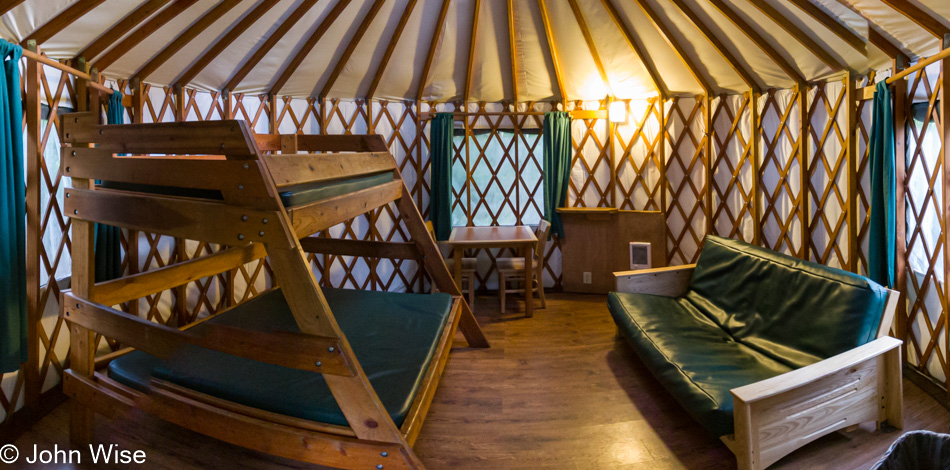
It’s always a sad moment when we are done packing the car and cleaning the debris we’ve tracked into the yurt and are about to lock the door. We’ve never stayed in a yurt where we didn’t leave with fond memories of every minute we spent in these canvas palaces by the sea. Just writing this made me run over to the Oregon State Park site, check for availability this coming Thanksgiving 2021, and snag two nights in this exact unit.
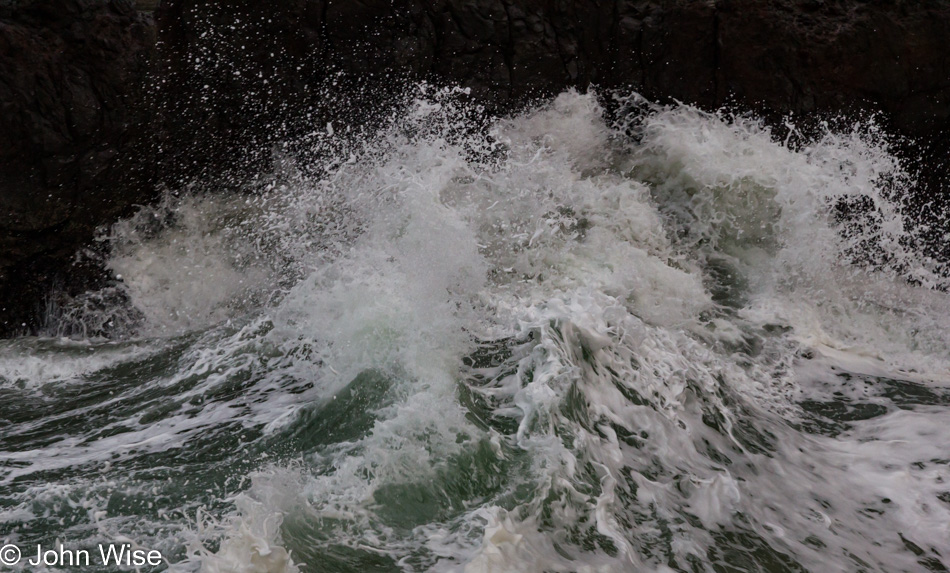
Just up the road is Cape Perpetua, but it is what lies below that place atop the mountain, the Devils Churn, that draws me in. Down below, the rushing water crashes into a tiny slice in the earth, a space too small to contain all of its energy, and so it explodes with the water, trying to make its escape.

I never tire of watching this spectacle and could stand here for hours capturing thousands of photos if it weren’t for Caroline gently dragging me away, reassuring me that hundreds were probably enough. As I went through the directory storing photos from this date, I ended up removing more than 250 images that I deemed unworthy. However, with all the chaos in the churn, it’s not like one could just grab the best image by taking a shot or two.
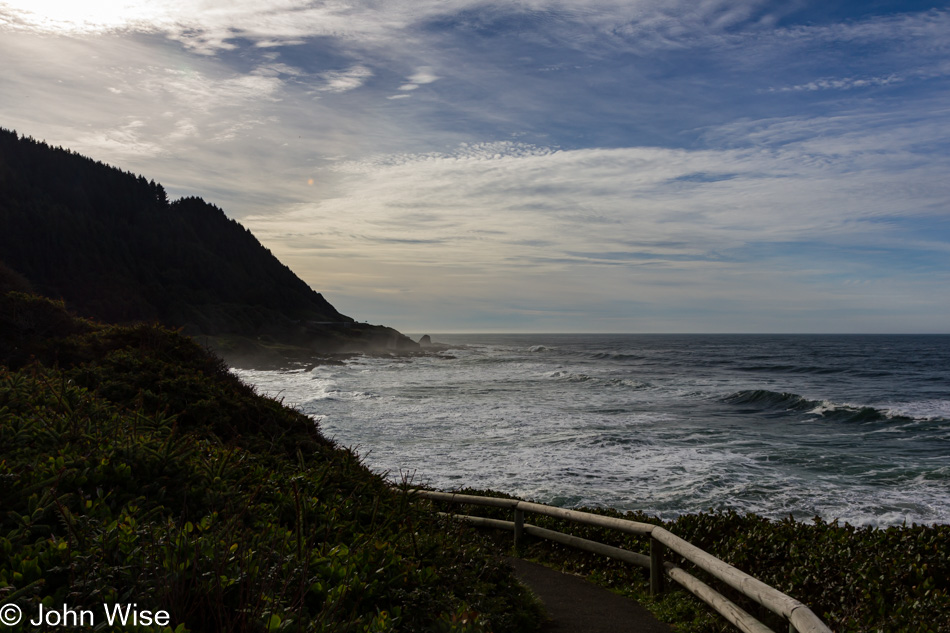
Part of the trail down to the churn. Next time I’m posting something about the Oregon Coast I should remember to capture the trail as it leads away from the parking lot as it too is a nice sight.

Speaking of nice sights.
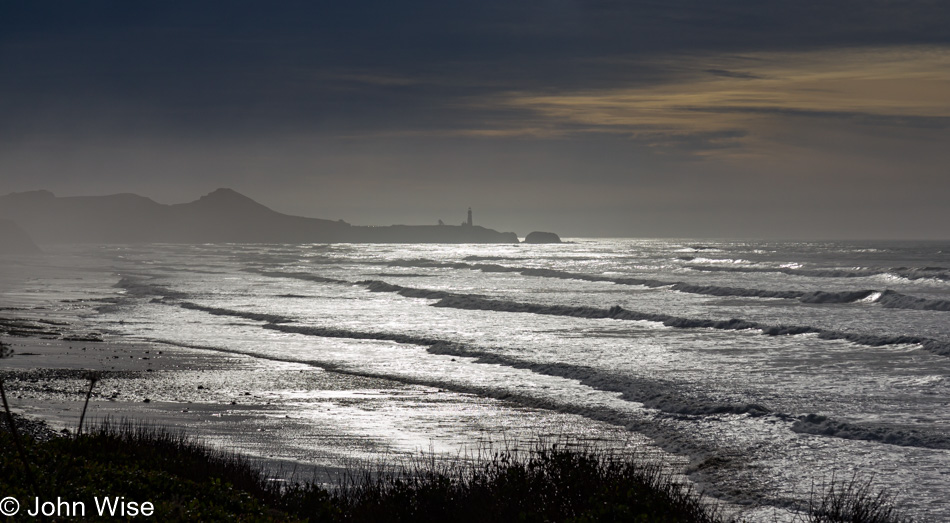
That’s the Yaquina Head Lighthouse in the distance. A priceless 1st-order Fresnel lens sits atop its tower; the same type of lens also resides in the Heceta Head Lighthouse I wrote about yesterday.

We’ve been driving north, but somewhere or other up here, we’ll need to turn around as we have another date with a yurt south of Washburne.

Stopping in Depoe Bay to just sit a while and admire the ocean.

And occasionally look over at my wife to smile at our incredible opportunities.

The seagull knows nothing of the enslavement to economic systems, unlike us, who know nothing about the freedom to soar. While the bird cannot describe its beautiful environment, humans are typically hard-pressed to describe what is beautiful in nature.

I took one hundred photos to capture the one that ended up here. I was mesmerized by the flow and patterns the water would take as it piled up against the rocks below me each time it traveled on different pathways as receding water changed the dynamic of the water coming in. With the center column being deeper, a dark emerald color pulled me into depths where that water was mysteriously traveling outside of my purview. I wanted to be a consciousness that is able to flow where the water goes. I want to be the bird that skims over the surface of the waves, just a feather above the churn that threatens to bring it out of flight and into the realm of the fish below. Like the hyphal knot emerging atop mycelium, seeing light for the first time, I want to have my first peek at the universe, but here I am, stuck within my head of preconceptions of my place among the others in my species.
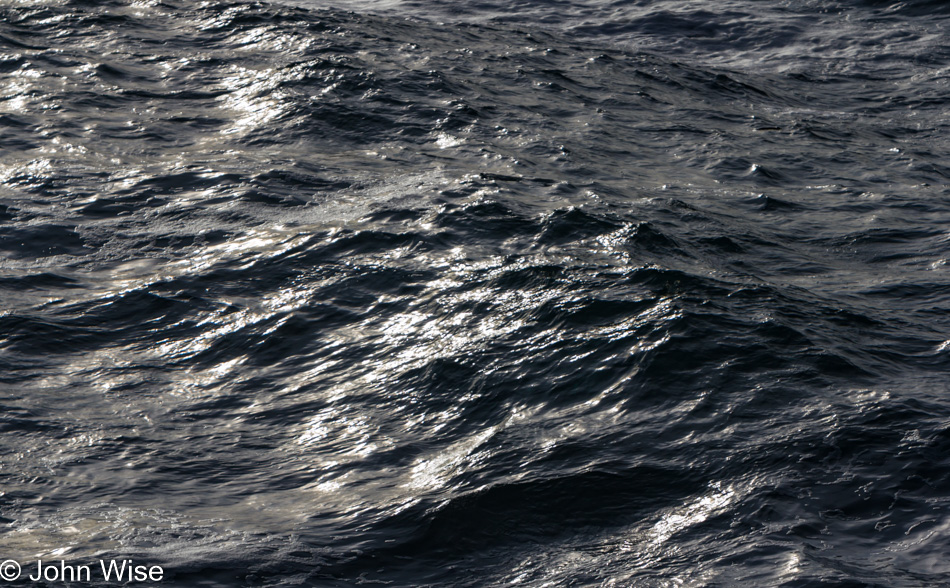
Water is infinite and doesn’t know of its relationships from the Pacific to its distant frozen cousin encased for the past 35,000 years in a glacier; it cannot know of its gaseous form in a cloud hovering over Pavlikeni, Bulgaria, or its fellow molecules about to be sipped as a coffee at a breakfast table anywhere on earth.
I on the other hand, if I try hard, am able to bring myself toward the edge of infinity when writing about what I’m looking at as I explore the internal landscape of language as it’s used to describe phenomena outside of me.

To the rocks of Siletz Bay, life is an imperceptibly slow crawl into disappearance. Over many thousands of years, they’ve grown smaller as their exteriors flake away under the barrage of the elements. I’m like those rocks in that I, too, am flaking away, but I’m aware of my disappearance as it happens in the comparative blink of an eye. Not satisfied with only knowing my fixed place, I have to travel my imagination and constantly feed it with all forms of stimuli as I try to understand the peculiarity of self-awareness that the water and rocks may never know.
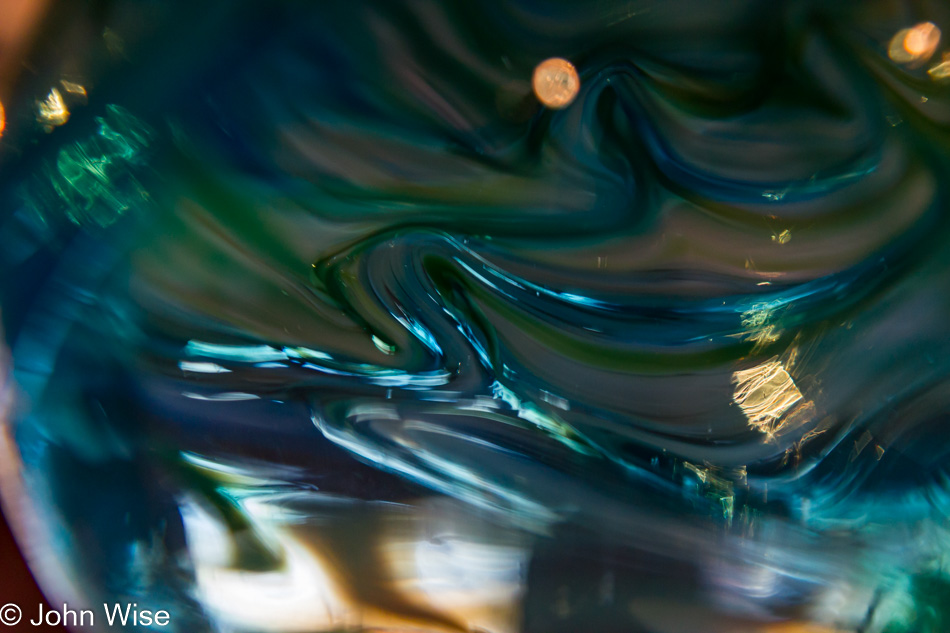
I’m nearly always astonished at how little awareness my fellow humans bring to the game of life. Here we are in Lincoln City at the local streetside glassworks, and as I look at this float, it is the result of our ingenuity to bring sand, lime, and soda ash together under an incredible amount of heat that has allowed us to protect ourselves from the elements, store fluids, restore our vision, look into the heavens, and examine things we cannot see otherwise.
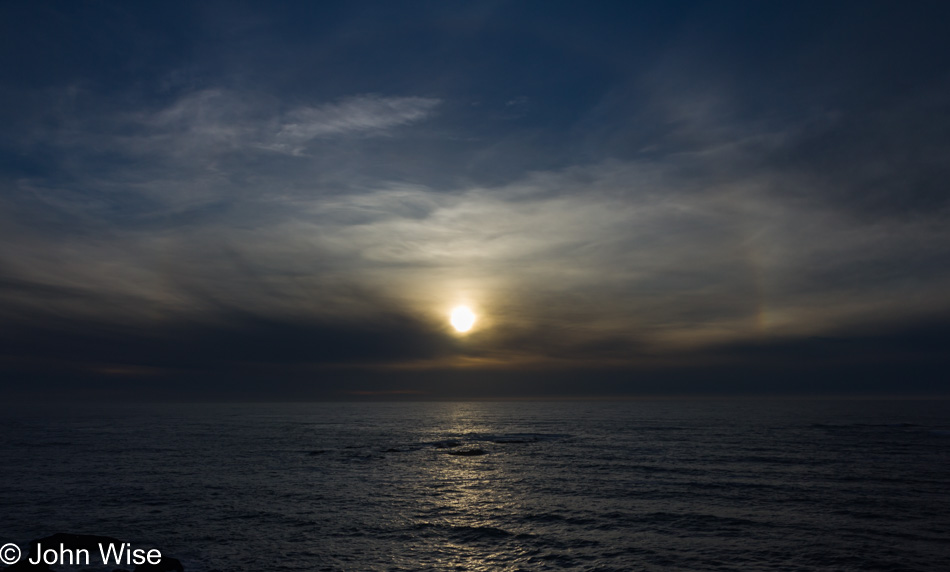
Where’s my bag of infinite knowledge when I want to know more about the 22° halo I’m looking at? Oh yeah, with the help of community knowledge shared on the internet, I know that this is from high-altitude hexagon-shaped ice crystals that, as light passes through them, bend the light at a 22° angle.
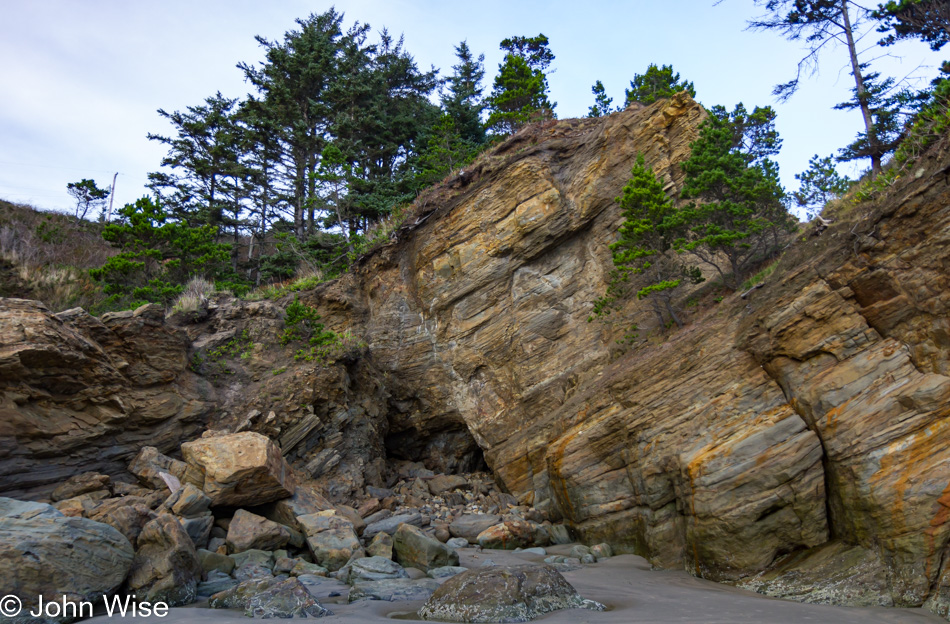
When did these rocks fall down? When were they formed? What minerals are present? What other people lived here 500 years ago? What are we leaving for people 500 years from now that will tell of our relationship and understanding of what we were looking at?
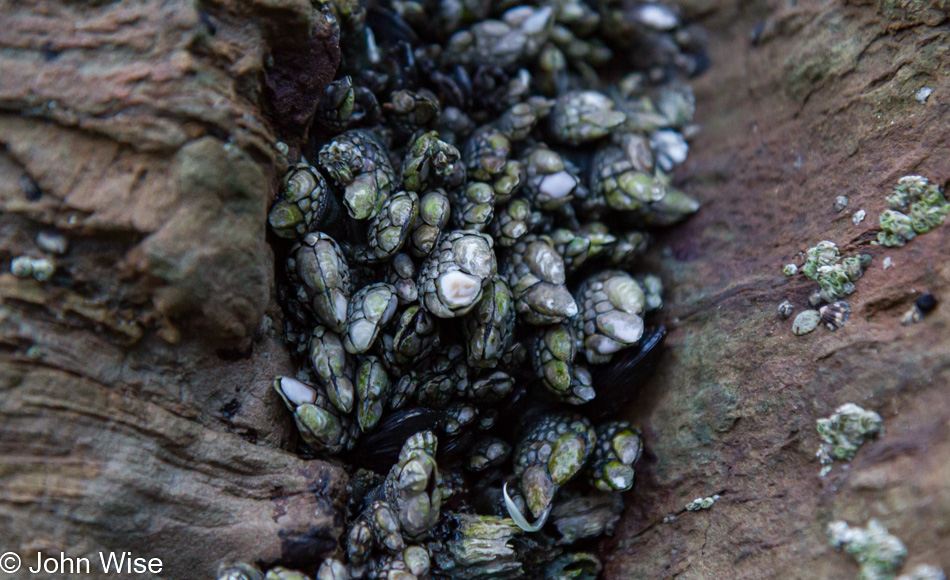
These barnacles won’t be telling the story, nor will the average person who might have had the ability, but instead, they are locked into artificial existences that never ask them to describe their world as much as it demands they consume banalities in their lonely isolation.
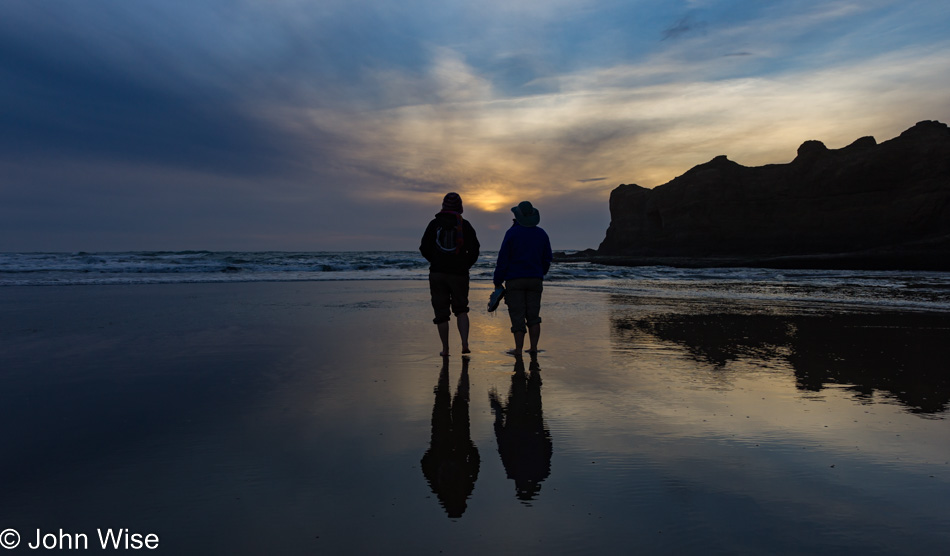
Wherever you are on this planet, what if it were just you and a friend looking out at the last sunset ever? What might you tell a future generation of beings of what you saw, experienced, and desired? What if, to a future generation of intelligent beings, the dreams, knowledge, and aspirations of a former species consisting of billions of people could be understood in minutes? What will we have collectively offered up for the incredible opportunity to have been standing there looking into existence?

Humanity has the opportunity to be 7 billion lighthouses to future generations, but instead, we trade our time on earth to effectively be nothing more than 6.9 billion specimens of bacteria buried in the soil beneath the lighthouse, hidden from view and unknown to those captivated by the shining light.